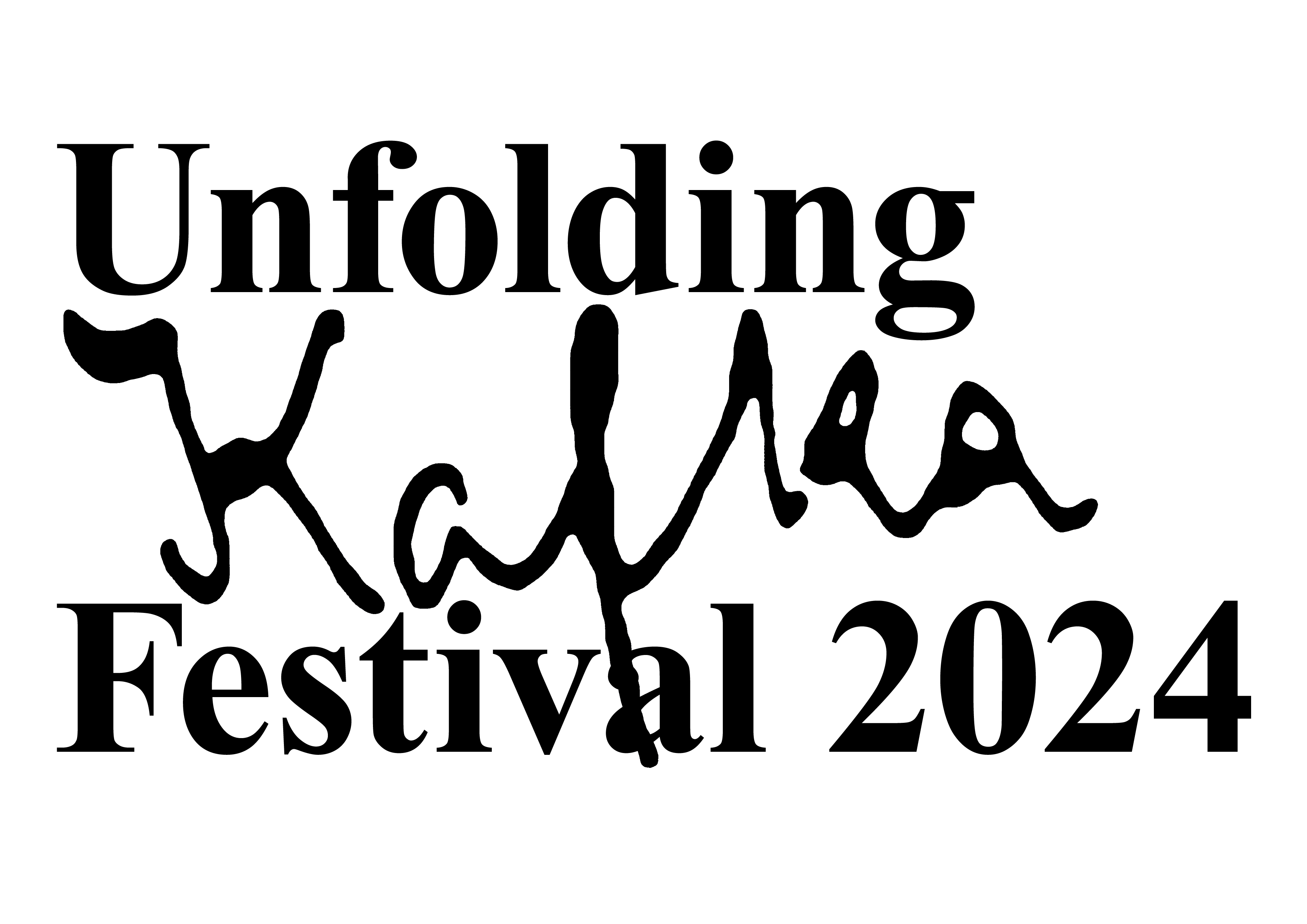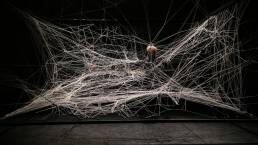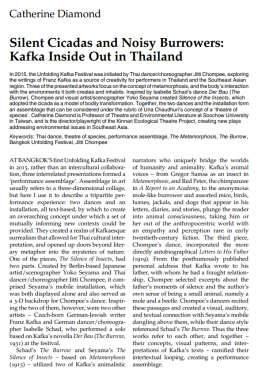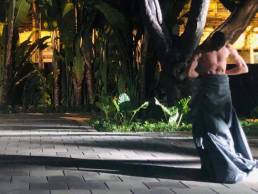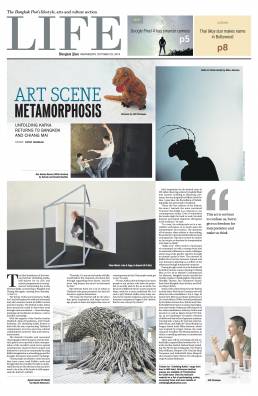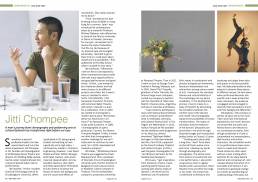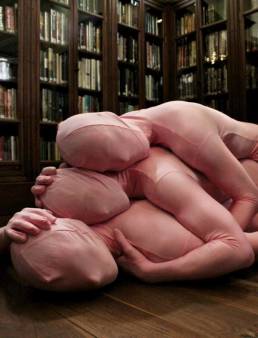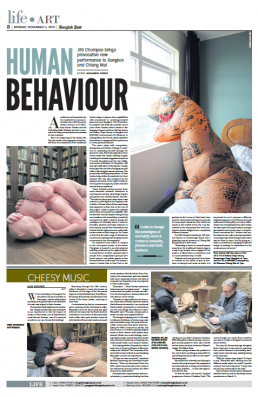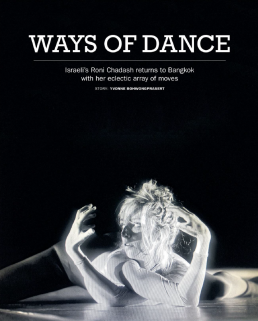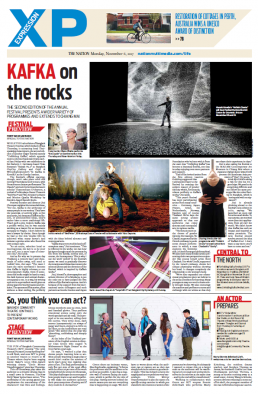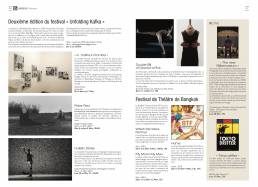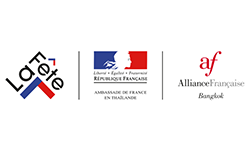WRITER: MELALIN MAHAVONGTRAKUL
Even though he is responsible for curating all performances and art pieces that have been showcasing at “Unfolding Kafka Festival”, dancer and choreographer Jitti Chompee has had limited exposure when it comes to actual works of the literature’s icon. He doesn’t want to just focus on the text of Franz Kafka but to extend the interpretation of his work, which is what the festival revolves around.
“Everything is inspired by him, but they’re not entirely about him,” said Jitti.
Various international artists such as Isabelle Schad, Yoko Seyama and Laurent Goldring have had their turn putting out their performances and art installations for the festival, which began since earlier this month and organised by Goethe Institut. Now, it’ll be Jitti’s turn to collaborate with Goldring and Italian performer Marika Rizzi for their performance Cesser d’être(Stop Being).
Cesser d’être is a mix of art installation and a dance performance. The performers are suspended within a tangled web of white strings that forms a transparent sculpture. Their movements are limited within the rigid frame that has been raised above the ground. Each performer works in tiny spaces. Their small movement is made distinctive by the movement of the sculpture itself. “We’re not seeing a Metamorphosis dance, you know. That has been done over and over — like different versions of Swan Lake,” he said.
“This is rather about the creativity each artist could draw from Kafka’s literary pieces.”
Jitti spoke about his upcoming performance with Life.
Tell us more about Cesser d’être.
The sculpture Goldring creates is always different each time. It keeps evolving. It also depends on who ends up performing inside the sculpture — mostly it’s Marika Rizzi as she works with him a lot. While it has already been showcased elsewhere, we want it to be all the more special for Thailand. So, he decided not to change only the string material, but also the shape of the sculpture itself. The sculpture will be bigger and will come in two pieces, requiring two performers. I tried getting inside once and they liked it. So, they asked me to join in, as well. We keep experimenting until we find our point of interest for Cesser d’être.
What is it like inside the sculpture?
It is quite an interesting experience. On the inside, it’s quite difficult to put your weight down and let the strings support your body. You don’t really feel pain until you leave the sculpture. You have to rely on your feelings and your body to find the space you can travel within. If it hurts then don’t go that way. It’s so unlike choreography that’s based from dance techniques. With this one, we create a choreography and movement by relying on our own feelings and touch.
Tell us about your experience working with Laurent Goldring and Marika Rizzi.
They were splendid. These two artists really take time to create their pieces. We have different approaches and styles in working. There are so many ways that they use to create movement within the sculpture. I get excited every day. I arrive at rehearsal each day not knowing what I’ll find. I always have fun because it’s not repetitive.
As festival director, what inspiration do you draw from Kafka’s works?
I only began reading his work because of the festival. Besides, I’m not focusing on his work then try to interpret what he wrote. I like talking to people instead, like Professor Thanomnuan O’charoen from the Department of Western Languages at the Faculty of Arts, Chulalongkorn University. She has translated so many of Kafka’s works. She gave me so much advice. That is how I understand better, and faster than reading the work on my own. I love the idea of folding and unfolding, as well as the metaphors he used. That’s our festival’s conceptual idea.
